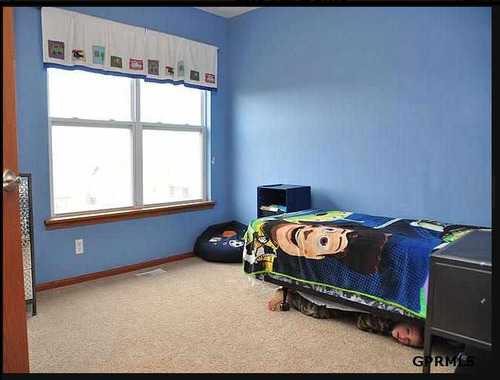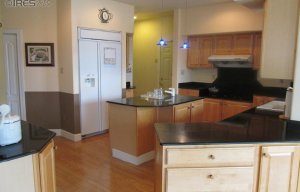1. Close shades, drapes and blinds during the day (all directions).
2. Wear lightweight clothing (short sleeves, shorts, cotton).
3. Set the air conditioning thermostat at 78 degrees or higher. Raise it higher to 80-85 degrees when away in the day. Note that settings below 78 degrees increase your cooling cost 8-12% per degree. Each degree makes a big difference. And setting your air conditioner at 70 degrees instead of 78 can almost double your operating cost!
4. Don’t choose a lower air conditioning temperature when you first turn it on. It won’t cool faster if you set it lower. Set low, it cools longer, not faster.
5. When weather is mild, use fans instead of the air conditioner. Your central air conditioner will use about 100 times more energy than a fan at medium speed.
6. If you have ceiling fans, run the fans and the air conditioner at the same time but set the air conditioner 2 or 3 degrees higher. You’ll feel just as cool, but your overall cooling cost will be 15%-25% lower!
7. Turn off ceiling fans when you’re away. Fans cool your skin. Fans don’t cool the room! Turn them off if you’re not going to be there to feel the breeze.
8. Use a microwave instead of the range/oven. The microwave doesn’t heat the kitchen.
9. Keep windows and doors closed while air conditioning.
10. Change the air conditioner’s air filter monthly during heavy use. When it’s clogged, airflow is restricted — cooling costs rise, and your system may eventually suffer a compressor failure with a $1,000+ repair bill!
11. Arrange items in your refrigerator for quick removal and return. Your refrigerator cools the food but heats the kitchen! The longer the door is open, the longer it runs, heating the kitchen and raising your air conditioning costs.
12. Vent the clothes dryer to the out-of-doors. Otherwise it pours heat and moisture into the house air.
13. If your dryer has an automatic cycle, use it. Over-drying wastes energy and wears out your clothes.
14. Clean the dryer lint filter screen frequently and check the outdoor vent opening. When lint slows the airflow, the dryer runs longer. When the vent is clogged the clothes get a long, ineffective tumbling.
15. Drink plenty of cool liquids. Avoid caffeine or alcohol. Eat lightly. Cook outdoors.
16. Plant shade trees. Outside shade can reduce air conditioning costs 30%. Shade on the east and west is most important.
17. Seal air leaks around doors and windows. Use caulk and weather-stripping.
18. If you have central cooling, keep all air conditioning supply registers open; don’t close off rooms or registers. That doesn’t save money, and it may lead to costly problems.
19. Check for air duct leaks. Duct leaks in the attic or under the house cost you money.
20. Close your fireplace damper!
21. Replace your old thermostat with a programmable thermostat.
22. On your central air conditioner’s thermostat FAN setting, always set the fan to AUTO, never set the fan to ON. This is important: Don’t move the fan lever to “ON”! Set the fan on “AUTO”. On AUTO, humidity is kept lower, costs are much lower and comfort is higher.
23. Keep up the habit of turning off lights as you leave a room, especially in summer. Lights add a lot of heat to the room.
24. Have a qualified service technician conduct a seasonal checkup on your central heat pump or air conditioner. Your springtime servicing should include a check of your thermostat including leveling it if necessary; a check of your system’s refrigerant charge; cleaning evaporator and condenser coils if necessary; and check for duct leaks and repair as necessary.
25. Consider a pool pump timer. Pool pumping 24 hours/day with a ¾ horsepower pump motor can cost nearly $80/month at current electric rates. A timer is well worth its installed cost.
26. Bulk up your ceiling insulation. The highest recommended level for our region is “R38” (38 Rvalues) or about 14 inches depth of the newer kinds of blown white fiberglass insulation. A good protective layer of ceiling insulation prevents heat from moving inward in summer and holds heat inside in winter.
27. Use your bathroom vent fan after a shower.
28. Reconsider having an old refrigerator or freezer in your hot garage!
29. Avoid rooftop power ventilating fans. They tend to cost more to operate than they save, especially if the thermostat is set too low.
30. Make sure your air conditioner’s return-air grill has plenty of clearance. Floor-level grills sometimes get covered by a rug or blocked by furniture.
31. Use a clothesline.
32. Make sure your clothes dryer isn’t throwing lint onto your outdoor cooling condenser coils!
33. If you have a waste-heat-recovery water heating system, make sure the little pump is still working! Otherwise you may go for years without realizing that the system does nothing.
34. If you’re replacing your old air conditioner, don’t pressure your installer to oversize your new system. Bigger isn’t better. A system correctly sized for your house will run longer but for less cost, dry the air better and give greater comfort than the next bigger size.
35. If you’re replacing your old air conditioner, replace both halves if it’s a “split system”. If you replace only the outdoor condensing unit but keep your old indoor blower-coil, you’ll likely end up with a mismatched, low-efficiency system.
36. Make sure your air conditioner’s thermostat is well away from any source or heat. Keep lamps at a distance to avoid false high temperature readings and unwanted long cooling runtimes.
37. If your garage was long ago converted to an enclosed, heated and cooled room, make sure it has ceiling insulation.
38. Make sure your ceiling fans are breezing downwards, not upwards. A common problem.
39. If your air conditioning ductwork is under the house and your supply air registers are at floor level, check all of them from above with a flashlight. First, it’s easy for the register vanes to be accidentally kicked shut. Second, make sure the duct boot under the vent is still connected. When you look down through a floor register, you shouldn’t see the earth!







